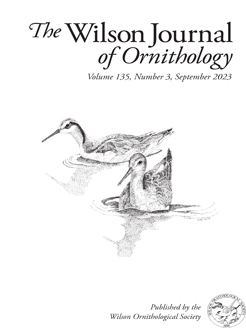Patterns of species' distribution and abundance are dynamic in response to changes in land cover, climate, interspecific relationships, and other factors. There are many examples of latitudinal range expansions, contractions, and shifts associated with warming climate. Global change effects are also manifested along gradients of longitude, and woody plant encroachment westward into the Great Plains might also be creating opportunities for species to expand into new areas. We used data from the North American Breeding Bird Survey (BBS) to examine the abundance of Red-bellied Woodpecker (Melanerpes carolinus) at a western edge of its distribution in Texas, Oklahoma, and Kansas. We compared BBS data from 1968–1992 to data from 1993–2018, fitting a series of generalized linear models to best explain variability in abundance. The best performing model included an interaction between time period and longitude, indicating both a change in abundance and in the distribution of abundance over time. Specifically, we found that Red-bellied Woodpecker increased in abundance near its western distributional limit over the past 5 decades, beginning at approximately – 94 degrees longitude.
Los patrones de distribución y abundancia de las especies son dinámicos en respuesta a los cambios en uso del suelo, el clima, las relaciones interespecíficas y otros factores. Existen muchos ejemplos de expansiones, contracciones y desplazamientos latitudinales de área de distribución asociados al calentamiento del clima. Los efectos del cambio global también se manifiestan a lo largo de gradientes de longitud y la invasión de plantas leñosas hacia el oeste en las Great Plains también podría estar creando oportunidades para que las especies colonicen nuevas áreas. Utilizamos datos del North American Breeding Bird Survey (BBS) para examinar la abundancia del carpintero Melanerpes carolinus en el límite occidental de su distribución en Texas, Oklahoma y Kansas. Comparamos los datos de BBS de 1968–1992 con los de 1993–2018, ajustando una serie de modelos lineales generalizados para explicar mejor la variabilidad en la abundancia. El modelo con mejores resultados incluyó una interacción entre el periodo de tiempo analizado y la longitud, indicando un cambio en la abundancia y un cambio en la distribución de la abundancia a lo largo del tiempo. Específicamente, encontramos que la abundancia de este carpintero aumentó cerca de su límite de distribución occidental durante las últimas 5 décadas, comenzando aproximadamente a – 94 grados de longitud.
Palabras clave: distribution, expansión, longitud.





